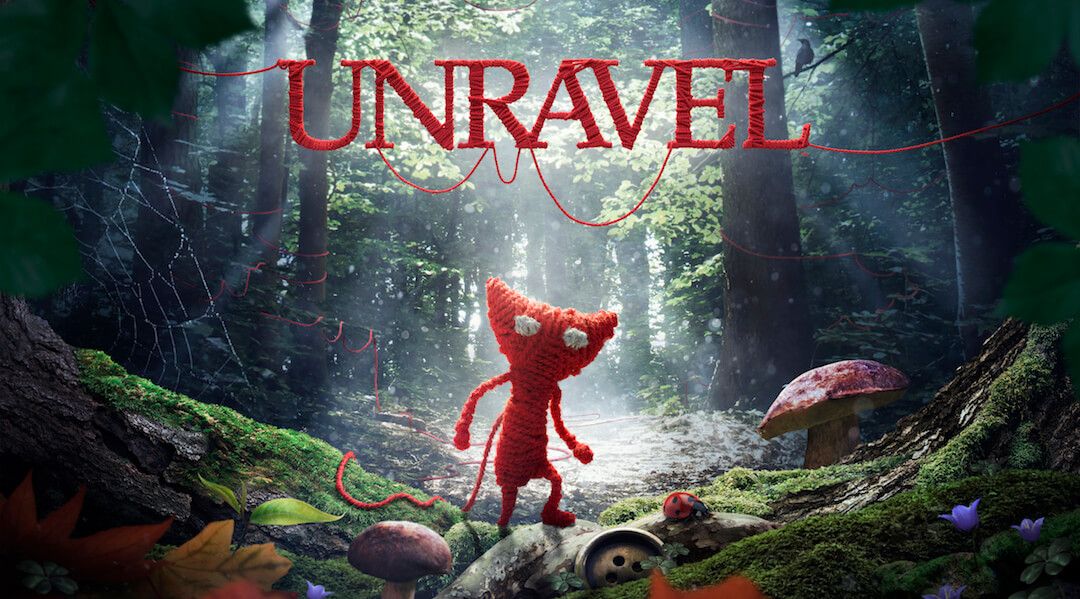Coldwood Interactive's Unravel is a moving puzzle platformer bolstered by strong level design, a creative mechanic, and an unbelievably endearing main character.
When Unravel was first revealed back at EA’s E3 2015 press conference, most pegged it as the next Ori and the Blind Forest– a potentially moving experience featuring a memorable central character, beautiful art, and simple yet effective platforming/puzzle-solving. At the time, the comparisons were apt but still left plenty of questions. Sure, Unravel’s lead protagonist, Yarny, was cute, but could his adventures sustain a full platforming experience?
Having now played Unravel it’s clear that the answer to the earlier question is a resounding yes. Not only is this game an inventive, albeit simplistic puzzle platformer, but also its design and themes are incredibly affecting. Put simply, Unravel continues to prove that games can be moving experiences, while also being fun to play.
While Unravel doesn’t have a traditional story or structure, per say, it does package the gameplay in a unique way. As the unbelievably cute Yarny, a stick figure-esque character made of a single strand of yarn, players will enter real photographs and explore a series of natural environments, from dense forests in the fall to a rain-covered mining facility to a snow-covered hillside. However, progressing through each level is no easy task, and will require a fair bit of clever thinking on the part of the player.
Much of the platforming and puzzle-solving in Unravel focuses on using Yarny’s strand of yarn to rappel up and over obstacles, swing across open areas, lift objects using anchor points, or bounce between a taught strand up to new heights. But because there is only a single strand of yarn to work with, choosing the right route from point A to point B is essential, lest Yarny runs out of yarn. Granted, the puzzle solving and platforming starts out pretty straightforward, but eventually the challenge begins to ramp up. Each new obstacle asks the player to find out what Yarny can and can’t work with, as indicated by tiny anchor points for his yarn, but finding out how to best utilize the yarn and progress isn’t always so clear.
For the most part, finding out how Yarny is to use his yarn to advance through each level makes for some engaging platforming, but it isn’t flawless. There were some occasions where Unravel didn’t make the solution as clear as it could be, which left us banging our head against a few of its puzzles. It’s both a strength and a weakness for Unravel: the free form puzzles make the environment feel as realistic as it can be, but as a result the solutions are sometimes difficult to see. There will be times where it feels as if a solution should work, but there is only ever one correct path forward.
Ultimately, though, the puzzle solving and the platforming in Unravel is a delight. The yarn mechanic continues to build on itself in clever new ways, and the wonderfully designed environments consistently surprise. There was not a single moment that playing Unravel felt derivative or generic, or where the mechanics got old. Developer Coldwood Interactive knows exactly how to maintain consistency with its platforming, and when to add a new wrinkle to spice things up. Our only legitimate complaint is that there isn’t more of Unravel to play, but perhaps a sequel will satisfy that desire.
But the possibility of an Unravel sequel doesn’t seem in Coldwood’s plans, based on our time with the game. This is an experience that is meant to be singular and affecting, and it succeeds on nearly every level. With its use of tilt shift photography, Unravel makes the player, and therefore Yarny, feel like such a tiny piece of a massive world, much in the same way the Toy Story films do. There’s also both a sense of wonder and danger to each new level, urging the player to explore but cautioning them from advancing too fast.
It’s impossible not to connect with Yarny from the very first moments of Unravel; he is a character that is sure to draw a massive fan base in the years to come. But more than that, though, Yarny’s unassuming design helps reinforce the mature themes of the game. Make no mistake, Yarny is a cutesy character, but Unravel is hardly a kid’s game. There’s a lot to Unravel lying just beneath the surface, and by the end we’d bet most will be moved in one way or another.
Visually stunning, endlessly creative, and wholly affecting, Unravel is a propulsive journey with a clear destination. It wants to delight, entertain, and challenge the player, and it succeeds way more often than it fails. If you buy into the world that Coldwood Interactive has created, Yarny’s adventures will likely stick with you for a long time to come.
Watch the First Two Levels of Unravel Below
[HTML1]
Unravel releases February 9, 2016 for PC, PS4, and Xbox One. Game Rant was provided a PS4 code for this review.

